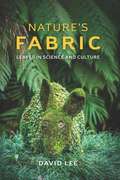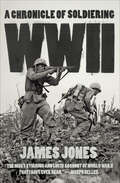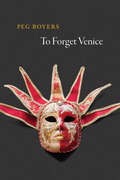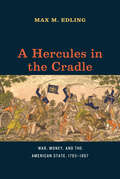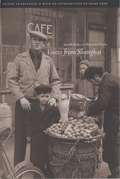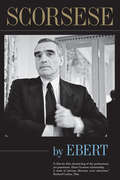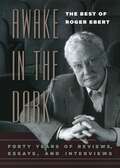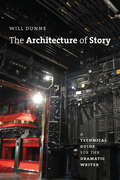- Table View
- List View
Abductive Analysis: Theorizing Qualitative Research
by Iddo Tavory Stefan TimmermansIn Abductive Analysis, Iddo Tavory and Stefan Timmermans provide a new navigational map for theorizing qualitative research. They outline a way to think about observations, methods, and theories that nurtures theory formation without locking it into predefined conceptual boxes. The book provides novel ways to approach the challenges that plague qualitative researchers across the social sciences—how to conceptualize causality, how to manage the variation of observations, and how to leverage the researcher’s community of inquiry. Abductive Analysis is a landmark work that shows how a pragmatist approach provides a productive and fruitful way to conduct qualitative research.
Abductive Analysis: Theorizing Qualitative Research
by Iddo Tavory Stefan TimmermansIn Abductive Analysis, Iddo Tavory and Stefan Timmermans provide a new navigational map for theorizing qualitative research. They outline a way to think about observations, methods, and theories that nurtures theory formation without locking it into predefined conceptual boxes. The book provides novel ways to approach the challenges that plague qualitative researchers across the social sciences—how to conceptualize causality, how to manage the variation of observations, and how to leverage the researcher’s community of inquiry. Abductive Analysis is a landmark work that shows how a pragmatist approach provides a productive and fruitful way to conduct qualitative research.
Nature's Fabric: Leaves in Science and Culture
by David LeeLeaves are all around us—in backyards, cascading from window boxes, even emerging from small cracks in city sidewalks given the slightest glint of sunlight. Perhaps because they are everywhere, it’s easy to overlook the humble leaf, but a close look at them provides one of the most enjoyable ways to connect with the natural world. A lush, incredibly informative tribute to the leaf, Nature’s Fabric offers an introduction to the science of leaves, weaving biology and chemistry with the history of the deep connection we feel with all things growing and green. Leaves come in a staggering variety of textures and shapes: they can be smooth or rough, their edges smooth, lobed, or with tiny teeth. They have adapted to their environments in remarkable, often stunningly beautiful ways—from the leaves of carnivorous plants, which have tiny “trigger hairs” that signal the trap to close, to the impressive defense strategies some leaves have evolved to reduce their consumption. (Recent studies suggest, for example, that some plants can detect chewing vibrations and mobilize potent chemical defenses.) In many cases, we’ve learned from the extraordinary adaptations of leaves, such as the invention of new self-cleaning surfaces inspired by the slippery coating found on leaves. But we owe much more to leaves, and Lee also calls our attention back to the fact that that our very lives—and the lives of all on the planet—depend on them. Not only is foliage is the ultimate source of food for every living thing on land, its capacity to cycle carbon dioxide and oxygen can be considered among evolution’s most important achievements—and one that is critical in mitigating global climate change. Taking readers through major topics like these while not losing sight of the small wonders of nature we see every day—if you’d like to identify a favorite leaf, Lee’s glossary of leaf characteristics means you won’t be left out on a limb—Nature’s Fabric is eminently readable and full of intriguing research, sure to enhance your appreciation for these extraordinary green machines.
Nature's Fabric: Leaves in Science and Culture
by David LeeLeaves are all around us—in backyards, cascading from window boxes, even emerging from small cracks in city sidewalks given the slightest glint of sunlight. Perhaps because they are everywhere, it’s easy to overlook the humble leaf, but a close look at them provides one of the most enjoyable ways to connect with the natural world. A lush, incredibly informative tribute to the leaf, Nature’s Fabric offers an introduction to the science of leaves, weaving biology and chemistry with the history of the deep connection we feel with all things growing and green. Leaves come in a staggering variety of textures and shapes: they can be smooth or rough, their edges smooth, lobed, or with tiny teeth. They have adapted to their environments in remarkable, often stunningly beautiful ways—from the leaves of carnivorous plants, which have tiny “trigger hairs” that signal the trap to close, to the impressive defense strategies some leaves have evolved to reduce their consumption. (Recent studies suggest, for example, that some plants can detect chewing vibrations and mobilize potent chemical defenses.) In many cases, we’ve learned from the extraordinary adaptations of leaves, such as the invention of new self-cleaning surfaces inspired by the slippery coating found on leaves. But we owe much more to leaves, and Lee also calls our attention back to the fact that that our very lives—and the lives of all on the planet—depend on them. Not only is foliage is the ultimate source of food for every living thing on land, its capacity to cycle carbon dioxide and oxygen can be considered among evolution’s most important achievements—and one that is critical in mitigating global climate change. Taking readers through major topics like these while not losing sight of the small wonders of nature we see every day—if you’d like to identify a favorite leaf, Lee’s glossary of leaf characteristics means you won’t be left out on a limb—Nature’s Fabric is eminently readable and full of intriguing research, sure to enhance your appreciation for these extraordinary green machines.
Nature's Fabric: Leaves in Science and Culture
by David LeeLeaves are all around us—in backyards, cascading from window boxes, even emerging from small cracks in city sidewalks given the slightest glint of sunlight. Perhaps because they are everywhere, it’s easy to overlook the humble leaf, but a close look at them provides one of the most enjoyable ways to connect with the natural world. A lush, incredibly informative tribute to the leaf, Nature’s Fabric offers an introduction to the science of leaves, weaving biology and chemistry with the history of the deep connection we feel with all things growing and green. Leaves come in a staggering variety of textures and shapes: they can be smooth or rough, their edges smooth, lobed, or with tiny teeth. They have adapted to their environments in remarkable, often stunningly beautiful ways—from the leaves of carnivorous plants, which have tiny “trigger hairs” that signal the trap to close, to the impressive defense strategies some leaves have evolved to reduce their consumption. (Recent studies suggest, for example, that some plants can detect chewing vibrations and mobilize potent chemical defenses.) In many cases, we’ve learned from the extraordinary adaptations of leaves, such as the invention of new self-cleaning surfaces inspired by the slippery coating found on leaves. But we owe much more to leaves, and Lee also calls our attention back to the fact that that our very lives—and the lives of all on the planet—depend on them. Not only is foliage is the ultimate source of food for every living thing on land, its capacity to cycle carbon dioxide and oxygen can be considered among evolution’s most important achievements—and one that is critical in mitigating global climate change. Taking readers through major topics like these while not losing sight of the small wonders of nature we see every day—if you’d like to identify a favorite leaf, Lee’s glossary of leaf characteristics means you won’t be left out on a limb—Nature’s Fabric is eminently readable and full of intriguing research, sure to enhance your appreciation for these extraordinary green machines.
Nature's Fabric: Leaves in Science and Culture
by David LeeLeaves are all around us—in backyards, cascading from window boxes, even emerging from small cracks in city sidewalks given the slightest glint of sunlight. Perhaps because they are everywhere, it’s easy to overlook the humble leaf, but a close look at them provides one of the most enjoyable ways to connect with the natural world. A lush, incredibly informative tribute to the leaf, Nature’s Fabric offers an introduction to the science of leaves, weaving biology and chemistry with the history of the deep connection we feel with all things growing and green. Leaves come in a staggering variety of textures and shapes: they can be smooth or rough, their edges smooth, lobed, or with tiny teeth. They have adapted to their environments in remarkable, often stunningly beautiful ways—from the leaves of carnivorous plants, which have tiny “trigger hairs” that signal the trap to close, to the impressive defense strategies some leaves have evolved to reduce their consumption. (Recent studies suggest, for example, that some plants can detect chewing vibrations and mobilize potent chemical defenses.) In many cases, we’ve learned from the extraordinary adaptations of leaves, such as the invention of new self-cleaning surfaces inspired by the slippery coating found on leaves. But we owe much more to leaves, and Lee also calls our attention back to the fact that that our very lives—and the lives of all on the planet—depend on them. Not only is foliage is the ultimate source of food for every living thing on land, its capacity to cycle carbon dioxide and oxygen can be considered among evolution’s most important achievements—and one that is critical in mitigating global climate change. Taking readers through major topics like these while not losing sight of the small wonders of nature we see every day—if you’d like to identify a favorite leaf, Lee’s glossary of leaf characteristics means you won’t be left out on a limb—Nature’s Fabric is eminently readable and full of intriguing research, sure to enhance your appreciation for these extraordinary green machines.
WWII: A Chronicle of Soldiering
by James JonesIn 1975, James Jones—the American author whose novels From Here to Eternity and The Thin Red Line had made him the preeminent voice of the enlisted man in World War II—was chosen to write the text for an oversized coffee table book edited by former Yank magazine art director Art Weithas and featuring visual art from World War II. The book was a best seller, praised for both its images and for Jones’s text, but in subsequent decades the artwork made it impossible for the book to be reproduced in its original form, and it fell out of print and was forgotten. This edition of WWII makes available for the first time in more than twenty years Jones’s stunning text, his only extended nonfiction writing on the war that defined his generation. Moving chronologically and thematically through the complex history of the conflict, Jones interweaves his own vivid memories of soldiering in the Pacific—from the look on a Japanese fighter pilot’s face as he bombed Pearl Harbor, so close that Jones could see him smile and wave, to hitting the beach under fire in Guadalcanal—while always returning to resounding larger themes. Much of WWII can be read as a tribute to the commitment of American soldiers, but Jones also pulls no punches, bluntly chronicling resentment at the privilege of the officers, questionable strategic choices, wartime suffering, disorganization, the needless loss of life, and the brutal realization that a single soldier is ultimately nothing but a replaceable cog in a heartless machine. As the generation that fought and won World War II leaves the stage, James Jones’s book reminds us of what they accomplished—and what they sacrificed to do so.
To Forget Venice (Phoenix Poets)
by Peg BoyersTo Forget Venice is the improbable challenge and the title of Peg Boyers’s newest collection of poems. The site of several unforgettable years of her adolescence, the place she has returned to more frequently than any other, the city of Venice is both adored and reviled by the speakers in this varied and unconventionally polyphonic work. The voices we hear in these poems belong not only to characters like the mother of Tadzio (think Death in Venice), or the companion of Vladimir Ilych Lenin, or the Victorian prophet John Ruskin and his wife, Effie, but also to wall moss, and sand, and—most especially—an authorial speaker who in 1965, at age thirteen, landed in Venice and never quite recovered from the formative experiences that shaped her there. Ranging over several stages of a life that features adolescent heartbreak and betrayal, marriage and children, friendship and loss, the book insistently addresses the author’s desire to get to the bottom of her obsession with a place that has imprinted itself so profoundly on her consciousness.
To Forget Venice (Phoenix Poets)
by Peg BoyersTo Forget Venice is the improbable challenge and the title of Peg Boyers’s newest collection of poems. The site of several unforgettable years of her adolescence, the place she has returned to more frequently than any other, the city of Venice is both adored and reviled by the speakers in this varied and unconventionally polyphonic work. The voices we hear in these poems belong not only to characters like the mother of Tadzio (think Death in Venice), or the companion of Vladimir Ilych Lenin, or the Victorian prophet John Ruskin and his wife, Effie, but also to wall moss, and sand, and—most especially—an authorial speaker who in 1965, at age thirteen, landed in Venice and never quite recovered from the formative experiences that shaped her there. Ranging over several stages of a life that features adolescent heartbreak and betrayal, marriage and children, friendship and loss, the book insistently addresses the author’s desire to get to the bottom of her obsession with a place that has imprinted itself so profoundly on her consciousness.
A Hercules in the Cradle: War, Money, and the American State, 1783-1867 (American Beginnings, 1500-1900)
by Max M. EdlingTwo and a half centuries after the American Revolution the United States stands as one of the greatest powers on earth and the undoubted leader of the western hemisphere. This stupendous evolution was far from a foregone conclusion at independence. The conquest of the North American continent required violence, suffering, and bloodshed. It also required the creation of a national government strong enough to go to war against, and acquire territory from, its North American rivals. In A Hercules in the Cradle, Max M. Edling argues that the federal government’s abilities to tax and to borrow money, developed in the early years of the republic, were critical to the young nation’s ability to wage war and expand its territory. He traces the growth of this capacity from the time of the founding to the aftermath of the Civil War, including the funding of the War of 1812 and the Mexican War. Edling maintains that the Founding Fathers clearly understood the connection between public finance and power: a well-managed public debt was a key part of every modern state. Creating a debt would always be a delicate and contentious matter in the American context, however, and statesmen of all persuasions tried to pay down the national debt in times of peace. A Hercules in the Cradle explores the origin and evolution of American public finance and shows how the nation’s rise to great-power status in the nineteenth century rested on its ability to go into debt.
A Hercules in the Cradle: War, Money, and the American State, 1783-1867 (American Beginnings, 1500-1900)
by Max M. EdlingTwo and a half centuries after the American Revolution the United States stands as one of the greatest powers on earth and the undoubted leader of the western hemisphere. This stupendous evolution was far from a foregone conclusion at independence. The conquest of the North American continent required violence, suffering, and bloodshed. It also required the creation of a national government strong enough to go to war against, and acquire territory from, its North American rivals. In A Hercules in the Cradle, Max M. Edling argues that the federal government’s abilities to tax and to borrow money, developed in the early years of the republic, were critical to the young nation’s ability to wage war and expand its territory. He traces the growth of this capacity from the time of the founding to the aftermath of the Civil War, including the funding of the War of 1812 and the Mexican War. Edling maintains that the Founding Fathers clearly understood the connection between public finance and power: a well-managed public debt was a key part of every modern state. Creating a debt would always be a delicate and contentious matter in the American context, however, and statesmen of all persuasions tried to pay down the national debt in times of peace. A Hercules in the Cradle explores the origin and evolution of American public finance and shows how the nation’s rise to great-power status in the nineteenth century rested on its ability to go into debt.
A Hercules in the Cradle: War, Money, and the American State, 1783-1867 (American Beginnings, 1500-1900)
by Max M. EdlingTwo and a half centuries after the American Revolution the United States stands as one of the greatest powers on earth and the undoubted leader of the western hemisphere. This stupendous evolution was far from a foregone conclusion at independence. The conquest of the North American continent required violence, suffering, and bloodshed. It also required the creation of a national government strong enough to go to war against, and acquire territory from, its North American rivals. In A Hercules in the Cradle, Max M. Edling argues that the federal government’s abilities to tax and to borrow money, developed in the early years of the republic, were critical to the young nation’s ability to wage war and expand its territory. He traces the growth of this capacity from the time of the founding to the aftermath of the Civil War, including the funding of the War of 1812 and the Mexican War. Edling maintains that the Founding Fathers clearly understood the connection between public finance and power: a well-managed public debt was a key part of every modern state. Creating a debt would always be a delicate and contentious matter in the American context, however, and statesmen of all persuasions tried to pay down the national debt in times of peace. A Hercules in the Cradle explores the origin and evolution of American public finance and shows how the nation’s rise to great-power status in the nineteenth century rested on its ability to go into debt.
A Hercules in the Cradle: War, Money, and the American State, 1783-1867 (American Beginnings, 1500-1900)
by Max M. EdlingTwo and a half centuries after the American Revolution the United States stands as one of the greatest powers on earth and the undoubted leader of the western hemisphere. This stupendous evolution was far from a foregone conclusion at independence. The conquest of the North American continent required violence, suffering, and bloodshed. It also required the creation of a national government strong enough to go to war against, and acquire territory from, its North American rivals. In A Hercules in the Cradle, Max M. Edling argues that the federal government’s abilities to tax and to borrow money, developed in the early years of the republic, were critical to the young nation’s ability to wage war and expand its territory. He traces the growth of this capacity from the time of the founding to the aftermath of the Civil War, including the funding of the War of 1812 and the Mexican War. Edling maintains that the Founding Fathers clearly understood the connection between public finance and power: a well-managed public debt was a key part of every modern state. Creating a debt would always be a delicate and contentious matter in the American context, however, and statesmen of all persuasions tried to pay down the national debt in times of peace. A Hercules in the Cradle explores the origin and evolution of American public finance and shows how the nation’s rise to great-power status in the nineteenth century rested on its ability to go into debt.
Voices from Shanghai: Jewish Exiles in Wartime China
by Irene EberWhen Hitler came to power and the German army began to sweep through Europe, almost 20,000 Jewish refugees fled to Shanghai. A remarkable collection of the letters, diary entries, poems, and short stories composed by these refugees in the years after they landed in China, Voices from Shanghai fills a gap in our historical understanding of what happened to so many Jews who were forced to board the first ship bound for anywhere. Once they arrived, the refugees learned to navigate the various languages, belief systems, and ethnic traditions they encountered in an already booming international city, and faced challenges within their own community based on disparities in socioeconomic status, levels of religious observance, urban or rural origin, and philosophical differences. Recovered from archives, private collections, and now-defunct newspapers, these fascinating accounts make their English-languge debut in this volume. A rich new take on Holocaust literature, Voices from Shanghai reveals how refugees attempted to pursue a life of creativity despite the hardships of exile.
Voices from Shanghai: Jewish Exiles in Wartime China
by Irene EberWhen Hitler came to power and the German army began to sweep through Europe, almost 20,000 Jewish refugees fled to Shanghai. A remarkable collection of the letters, diary entries, poems, and short stories composed by these refugees in the years after they landed in China, Voices from Shanghai fills a gap in our historical understanding of what happened to so many Jews who were forced to board the first ship bound for anywhere. Once they arrived, the refugees learned to navigate the various languages, belief systems, and ethnic traditions they encountered in an already booming international city, and faced challenges within their own community based on disparities in socioeconomic status, levels of religious observance, urban or rural origin, and philosophical differences. Recovered from archives, private collections, and now-defunct newspapers, these fascinating accounts make their English-languge debut in this volume. A rich new take on Holocaust literature, Voices from Shanghai reveals how refugees attempted to pursue a life of creativity despite the hardships of exile.
Scorsese by Ebert
by Roger EbertRoger Ebert wrote the first film review that director Martin Scorsese ever received—for 1967’s I Call First, later renamed Who’s That Knocking at My Door—creating a lasting bond that made him one of Scorsese’s most appreciative and perceptive commentators. Scorsese by Ebert offers the first record of America’s most respected film critic’s engagement with the works of America’s greatest living director, chronicling every single feature film in Scorsese’s considerable oeuvre, from his aforementioned debut to his 2008 release, the Rolling Stones documentary Shine a Light. In the course of eleven interviews done over almost forty years, the book also includes Scorsese’s own insights on both his accomplishments and disappointments. Ebert has also written and included six new reconsiderations of the director’s less commented upon films, as well as a substantial introduction that provides a framework for understanding both Scorsese and his profound impact on American cinema. "Given their career-long back-and-forth, this collection makes perfect sense. . . . In these reconsiderations, Ebert invites us into his thought processes, letting us see not just what he thinks, but how he forms his opinions. Ebert’s insights into Scorsese are terrific, but this book offers the bonus of further insights into Ebert himself."—Time Out Chicago "Ebert, film critic for the Chicago Sun-Times, is an unabashed fan of Scorsese, whom he considers ‘the most gifted director of his generation.’ . . . Of special note are interviews with Scorsese over a 25-year period, in which the director candidly discusses his body of work."—Publishers Weekly
Scorsese by Ebert
by Roger EbertRoger Ebert wrote the first film review that director Martin Scorsese ever received—for 1967’s I Call First, later renamed Who’s That Knocking at My Door—creating a lasting bond that made him one of Scorsese’s most appreciative and perceptive commentators. Scorsese by Ebert offers the first record of America’s most respected film critic’s engagement with the works of America’s greatest living director, chronicling every single feature film in Scorsese’s considerable oeuvre, from his aforementioned debut to his 2008 release, the Rolling Stones documentary Shine a Light. In the course of eleven interviews done over almost forty years, the book also includes Scorsese’s own insights on both his accomplishments and disappointments. Ebert has also written and included six new reconsiderations of the director’s less commented upon films, as well as a substantial introduction that provides a framework for understanding both Scorsese and his profound impact on American cinema. "Given their career-long back-and-forth, this collection makes perfect sense. . . . In these reconsiderations, Ebert invites us into his thought processes, letting us see not just what he thinks, but how he forms his opinions. Ebert’s insights into Scorsese are terrific, but this book offers the bonus of further insights into Ebert himself."—Time Out Chicago "Ebert, film critic for the Chicago Sun-Times, is an unabashed fan of Scorsese, whom he considers ‘the most gifted director of his generation.’ . . . Of special note are interviews with Scorsese over a 25-year period, in which the director candidly discusses his body of work."—Publishers Weekly
Scorsese by Ebert
by Roger EbertRoger Ebert wrote the first film review that director Martin Scorsese ever received—for 1967’s I Call First, later renamed Who’s That Knocking at My Door—creating a lasting bond that made him one of Scorsese’s most appreciative and perceptive commentators. Scorsese by Ebert offers the first record of America’s most respected film critic’s engagement with the works of America’s greatest living director, chronicling every single feature film in Scorsese’s considerable oeuvre, from his aforementioned debut to his 2008 release, the Rolling Stones documentary Shine a Light. In the course of eleven interviews done over almost forty years, the book also includes Scorsese’s own insights on both his accomplishments and disappointments. Ebert has also written and included six new reconsiderations of the director’s less commented upon films, as well as a substantial introduction that provides a framework for understanding both Scorsese and his profound impact on American cinema. "Given their career-long back-and-forth, this collection makes perfect sense. . . . In these reconsiderations, Ebert invites us into his thought processes, letting us see not just what he thinks, but how he forms his opinions. Ebert’s insights into Scorsese are terrific, but this book offers the bonus of further insights into Ebert himself."—Time Out Chicago "Ebert, film critic for the Chicago Sun-Times, is an unabashed fan of Scorsese, whom he considers ‘the most gifted director of his generation.’ . . . Of special note are interviews with Scorsese over a 25-year period, in which the director candidly discusses his body of work."—Publishers Weekly
Awake in the Dark: The Best of Roger Ebert
by Roger EbertRoger Ebert has been writing film reviews for the Chicago Sun-Times for nearly forty years. And during those four decades, his wide knowledge, keen judgment, prodigious energy, and sharp sense of humor have made him America’s most celebrated film critic. He was the first such critic to win a Pulitzer Prize—one of just three film critics ever to receive that honor—and the only one to have a star dedicated to him on the Hollywood Walk of Fame. His groundbreaking hit TV show, At the Movies, meanwhile, has made “two thumbs up” one of the most coveted hallmarks in the entire industry. No critic alive has reviewed more movies than Roger Ebert, and yet his essential writings have never been collected in a single volume—until now. With Awake in the Dark, both fans and film buffs can finally bask in the best of Ebert’s work. The reviews, interviews, and essays collected here present a picture of this indispensable critic’s numerous contributions to the cinema and cinephilia. From The Godfather to GoodFellas, from Cries and Whispers to Crash, the reviews in Awake in the Dark span some of the most exceptional periods in film history, from the dramatic rise of rebel Hollywood and the heyday of the auteur, to the triumph of blockbuster films such as Star Wars and Raiders of the Lost Ark, to the indie revolution that is still with us today. The extraordinary interviews gathered in Awake in the Dark capture Ebert engaging not only some of the most influential directors of our time—Martin Scorsese, Steven Spielberg, Woody Allen, Robert Altman, Werner Herzog, and Ingmar Bergman—but also some of the silver screen’s most respected and dynamic personalities, including actors as diverse as Robert Mitchum, James Stewart, Warren Beatty, and Meryl Streep. Ebert’s remarkable essays play a significant part in Awake in the Dark as well. The book contains some of Ebert’s most admired pieces, among them a moving appreciation of John Cassavetes and a loving tribute to the virtues of black-and-white films. If Pauline Kael and Andrew Sarris were godmother and godfather to the movie generation, then Ebert is its voice from within—a writer whose exceptional intelligence and daily bursts of insight and enthusiasm have shaped the way we think about the movies. Awake in the Dark, therefore, will be a treasure trove not just for fans of this seminal critic, but for anyone desiring a fascinating and compulsively readable chronicle of film since the late 1960s.
The Architecture of Story: A Technical Guide for the Dramatic Writer (Chicago Guides to Writing, Editing, and Publishing)
by Will DunneWhile successful plays tend to share certain storytelling elements, there is no single blueprint for how a play should be constructed. Instead, seasoned playwrights know how to select the right elements for their needs and organize them in a structure that best supports their particular story. Through his workshops and book The Dramatic Writer’s Companion, Will Dunne has helped thousands of writers develop successful scripts. Now, in The Architecture of Story, he helps writers master the building blocks of dramatic storytelling by analyzing a trio of award-winning contemporary American plays: Doubt: A Parable by John Patrick Shanley, Topdog/Underdog by Suzan-Lori Parks, and The Clean House by Sarah Ruhl. Dismantling the stories and examining key components from a technical perspective enables writers to approach their own work with an informed understanding of dramatic architecture. Each self-contained chapter focuses on one storytelling component, ranging from “Title” and “Main Event” to “Emotional Environment” and “Crisis Decision.” Dunne explores each component in detail, demonstrating how it has been successfully handled in each play and comparing and contrasting techniques. The chapters conclude with questions to help writers evaluate and improve their own scripts. The result is a nonlinear reference guide that lets writers work at their own pace and choose the topics that interest them as they develop new scripts. This flexible, interactive structure is designed to meet the needs of writers at all stages of writing and at all levels of experience.
The Architecture of Story: A Technical Guide for the Dramatic Writer (Chicago Guides to Writing, Editing, and Publishing)
by Will DunneWhile successful plays tend to share certain storytelling elements, there is no single blueprint for how a play should be constructed. Instead, seasoned playwrights know how to select the right elements for their needs and organize them in a structure that best supports their particular story. Through his workshops and book The Dramatic Writer’s Companion, Will Dunne has helped thousands of writers develop successful scripts. Now, in The Architecture of Story, he helps writers master the building blocks of dramatic storytelling by analyzing a trio of award-winning contemporary American plays: Doubt: A Parable by John Patrick Shanley, Topdog/Underdog by Suzan-Lori Parks, and The Clean House by Sarah Ruhl. Dismantling the stories and examining key components from a technical perspective enables writers to approach their own work with an informed understanding of dramatic architecture. Each self-contained chapter focuses on one storytelling component, ranging from “Title” and “Main Event” to “Emotional Environment” and “Crisis Decision.” Dunne explores each component in detail, demonstrating how it has been successfully handled in each play and comparing and contrasting techniques. The chapters conclude with questions to help writers evaluate and improve their own scripts. The result is a nonlinear reference guide that lets writers work at their own pace and choose the topics that interest them as they develop new scripts. This flexible, interactive structure is designed to meet the needs of writers at all stages of writing and at all levels of experience.
The Architecture of Story: A Technical Guide for the Dramatic Writer (Chicago Guides to Writing, Editing, and Publishing)
by Will DunneWhile successful plays tend to share certain storytelling elements, there is no single blueprint for how a play should be constructed. Instead, seasoned playwrights know how to select the right elements for their needs and organize them in a structure that best supports their particular story. Through his workshops and book The Dramatic Writer’s Companion, Will Dunne has helped thousands of writers develop successful scripts. Now, in The Architecture of Story, he helps writers master the building blocks of dramatic storytelling by analyzing a trio of award-winning contemporary American plays: Doubt: A Parable by John Patrick Shanley, Topdog/Underdog by Suzan-Lori Parks, and The Clean House by Sarah Ruhl. Dismantling the stories and examining key components from a technical perspective enables writers to approach their own work with an informed understanding of dramatic architecture. Each self-contained chapter focuses on one storytelling component, ranging from “Title” and “Main Event” to “Emotional Environment” and “Crisis Decision.” Dunne explores each component in detail, demonstrating how it has been successfully handled in each play and comparing and contrasting techniques. The chapters conclude with questions to help writers evaluate and improve their own scripts. The result is a nonlinear reference guide that lets writers work at their own pace and choose the topics that interest them as they develop new scripts. This flexible, interactive structure is designed to meet the needs of writers at all stages of writing and at all levels of experience.
The Architecture of Story: A Technical Guide for the Dramatic Writer (Chicago Guides to Writing, Editing, and Publishing)
by Will DunneWhile successful plays tend to share certain storytelling elements, there is no single blueprint for how a play should be constructed. Instead, seasoned playwrights know how to select the right elements for their needs and organize them in a structure that best supports their particular story. Through his workshops and book The Dramatic Writer’s Companion, Will Dunne has helped thousands of writers develop successful scripts. Now, in The Architecture of Story, he helps writers master the building blocks of dramatic storytelling by analyzing a trio of award-winning contemporary American plays: Doubt: A Parable by John Patrick Shanley, Topdog/Underdog by Suzan-Lori Parks, and The Clean House by Sarah Ruhl. Dismantling the stories and examining key components from a technical perspective enables writers to approach their own work with an informed understanding of dramatic architecture. Each self-contained chapter focuses on one storytelling component, ranging from “Title” and “Main Event” to “Emotional Environment” and “Crisis Decision.” Dunne explores each component in detail, demonstrating how it has been successfully handled in each play and comparing and contrasting techniques. The chapters conclude with questions to help writers evaluate and improve their own scripts. The result is a nonlinear reference guide that lets writers work at their own pace and choose the topics that interest them as they develop new scripts. This flexible, interactive structure is designed to meet the needs of writers at all stages of writing and at all levels of experience.
The Architecture of Story: A Technical Guide for the Dramatic Writer (Chicago Guides to Writing, Editing, and Publishing)
by Will DunneWhile successful plays tend to share certain storytelling elements, there is no single blueprint for how a play should be constructed. Instead, seasoned playwrights know how to select the right elements for their needs and organize them in a structure that best supports their particular story. Through his workshops and book The Dramatic Writer’s Companion, Will Dunne has helped thousands of writers develop successful scripts. Now, in The Architecture of Story, he helps writers master the building blocks of dramatic storytelling by analyzing a trio of award-winning contemporary American plays: Doubt: A Parable by John Patrick Shanley, Topdog/Underdog by Suzan-Lori Parks, and The Clean House by Sarah Ruhl. Dismantling the stories and examining key components from a technical perspective enables writers to approach their own work with an informed understanding of dramatic architecture. Each self-contained chapter focuses on one storytelling component, ranging from “Title” and “Main Event” to “Emotional Environment” and “Crisis Decision.” Dunne explores each component in detail, demonstrating how it has been successfully handled in each play and comparing and contrasting techniques. The chapters conclude with questions to help writers evaluate and improve their own scripts. The result is a nonlinear reference guide that lets writers work at their own pace and choose the topics that interest them as they develop new scripts. This flexible, interactive structure is designed to meet the needs of writers at all stages of writing and at all levels of experience.
The Architecture of Story: A Technical Guide for the Dramatic Writer (Chicago Guides to Writing, Editing, and Publishing)
by Will DunneWhile successful plays tend to share certain storytelling elements, there is no single blueprint for how a play should be constructed. Instead, seasoned playwrights know how to select the right elements for their needs and organize them in a structure that best supports their particular story. Through his workshops and book The Dramatic Writer’s Companion, Will Dunne has helped thousands of writers develop successful scripts. Now, in The Architecture of Story, he helps writers master the building blocks of dramatic storytelling by analyzing a trio of award-winning contemporary American plays: Doubt: A Parable by John Patrick Shanley, Topdog/Underdog by Suzan-Lori Parks, and The Clean House by Sarah Ruhl. Dismantling the stories and examining key components from a technical perspective enables writers to approach their own work with an informed understanding of dramatic architecture. Each self-contained chapter focuses on one storytelling component, ranging from “Title” and “Main Event” to “Emotional Environment” and “Crisis Decision.” Dunne explores each component in detail, demonstrating how it has been successfully handled in each play and comparing and contrasting techniques. The chapters conclude with questions to help writers evaluate and improve their own scripts. The result is a nonlinear reference guide that lets writers work at their own pace and choose the topics that interest them as they develop new scripts. This flexible, interactive structure is designed to meet the needs of writers at all stages of writing and at all levels of experience.

